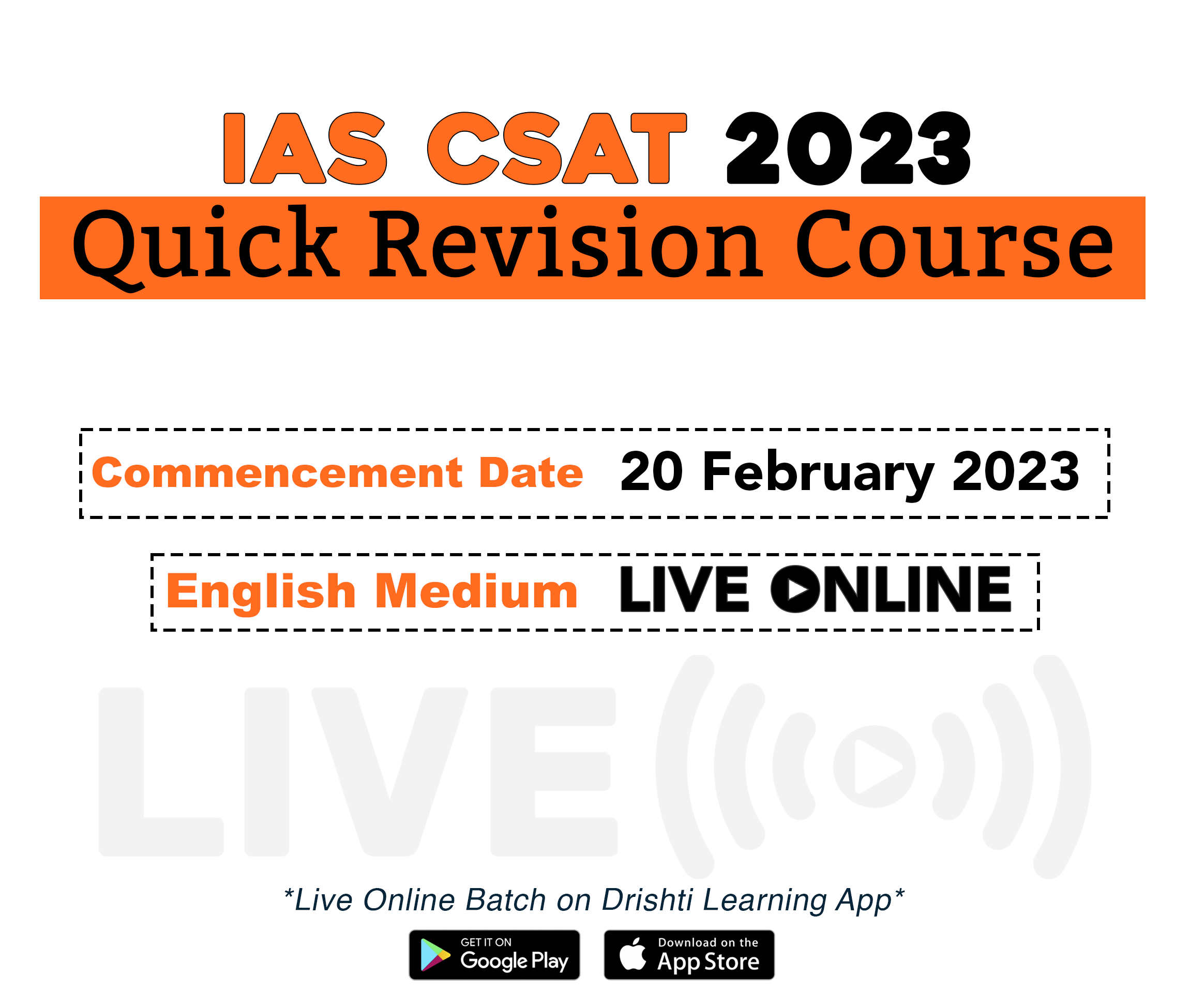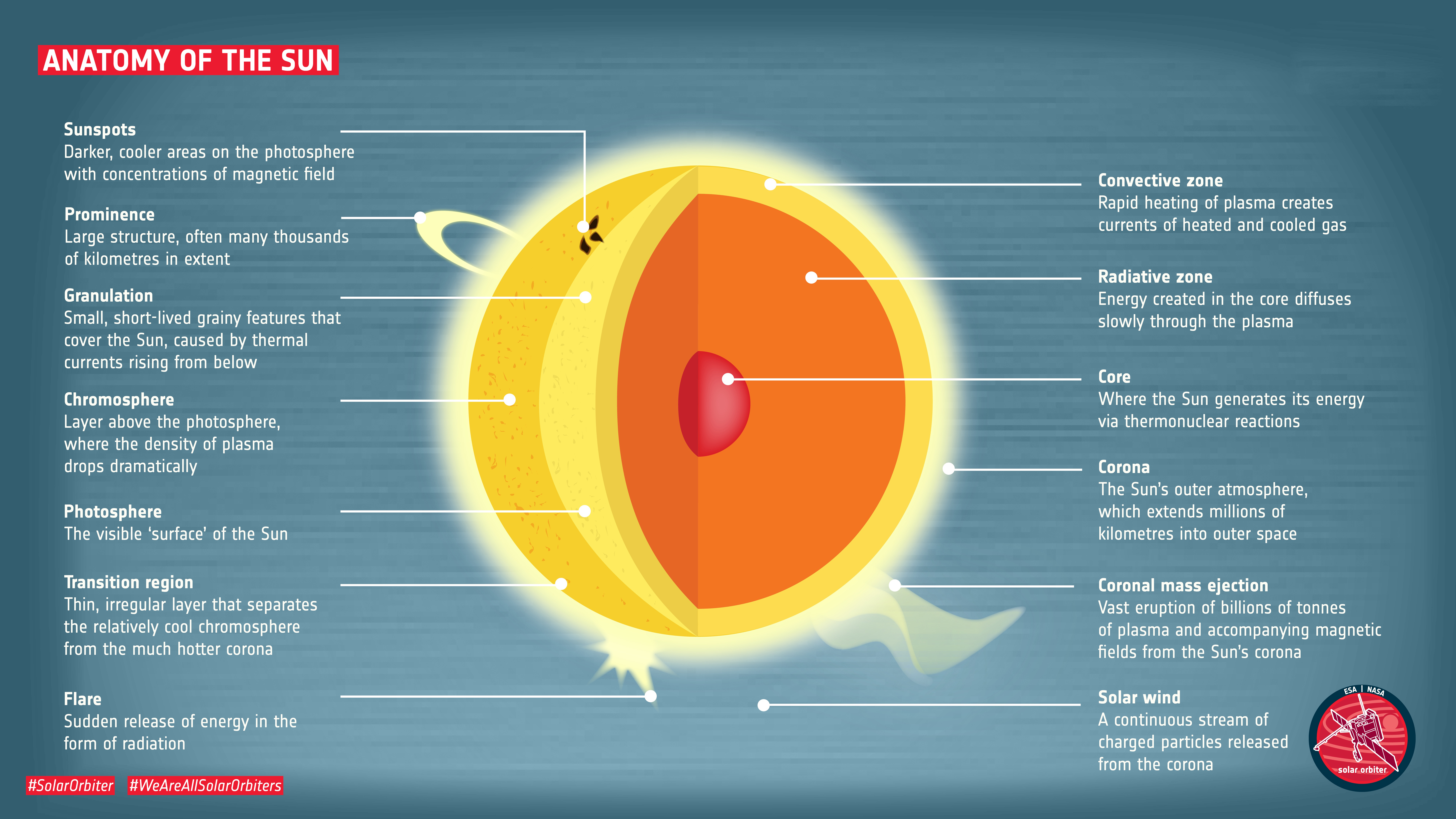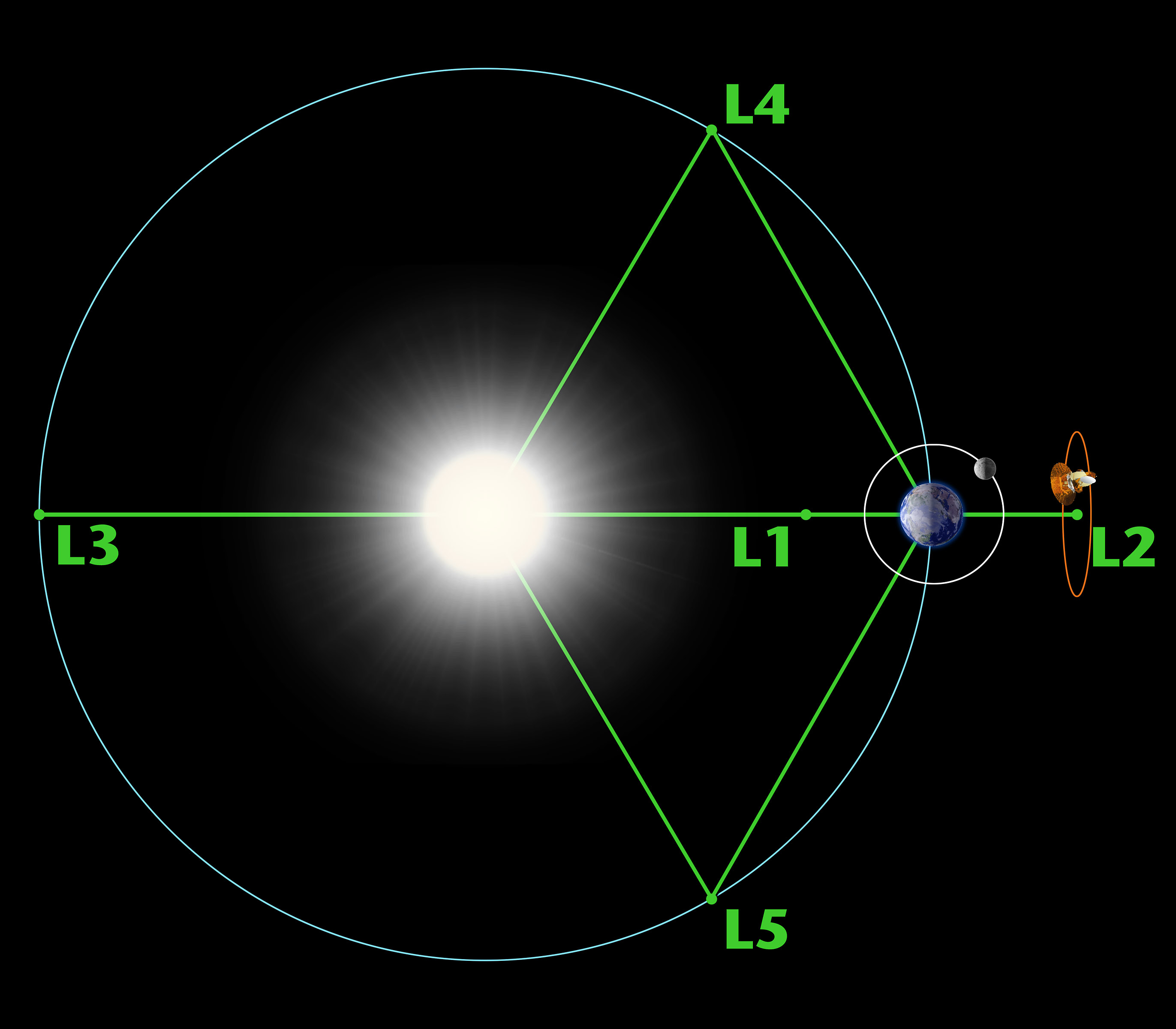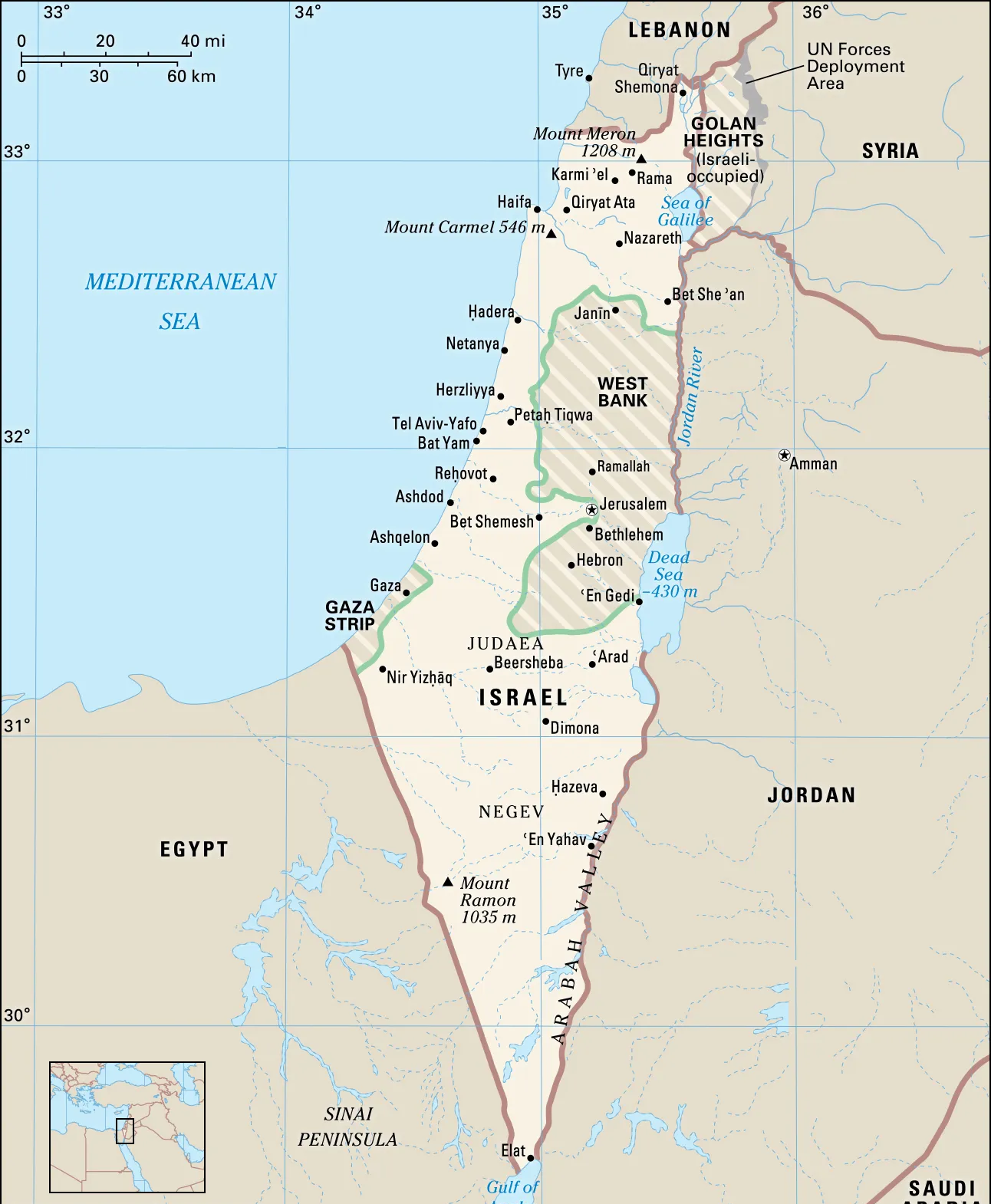Infographics
Science & Technology
India’s First Solar Mission
For Prelims: Aditya-L1 Mission, L1 (Lagrangian/Lagrange Point 1), Indian Space Research Organisation (ISRO), Missions to the Sun.
For Mains: Significance of Aditya-L1 Mission, Space Technology, ISRO Space Mission to Sun.
Why in News?
Recently, the Visible Line Emission Coronagraph (VLEC), the primary payload on board Aditya-L1, was handed over to Indian Space Research Organisation (ISRO) by the Indian Institute of Astrophysics (IIA).
- ISRO is planning to launch the Aditya-L1 mission, first Indian space mission to observe the Sun by June or July 2023 to observe the Sun and the solar corona.
What is Aditya-L1 Mission?
- Launch Vehicle:
- Aditya L1 will be launched using the Polar Satellite Launch Vehicle (PSLV) with 7 payloads (instruments) on board.
- The 7 payloads include:
- VELC
- Solar Ultraviolet Imaging Telescope (SUIT)
- Solar Low Energy X-ray Spectrometer (SoLEXS)
- Aditya Solar wind Particle Experiment (ASPEX)
- High Energy L1 Orbiting X-ray Spectrometer (HEL1OS)
- Plasma Analyser Package for Aditya (PAPA)
- Advanced Tri-axial High Resolution Digital Magnetometers
- Objective:
- Aditya L1 will study the Sun’s corona, Sun's photosphere, chromosphere, solar emissions, solar winds and flares, and Coronal Mass Ejections (CMEs), and will carry out round-the-clock imaging of the Sun.
- The mission will be launched by ISRO to the L1 orbit which is about 1.5 million km from the Earth. The orbit allows Aditya-L1 to look at the Sun continuously.
- Aditya L1 will study the Sun’s corona, Sun's photosphere, chromosphere, solar emissions, solar winds and flares, and Coronal Mass Ejections (CMEs), and will carry out round-the-clock imaging of the Sun.
What is L1?
- L1 refers to Lagrangian/Lagrange Point 1, one of 5 points in the orbital plane of the Earth-Sun system.
- Lagrange Points are positions in space where the gravitational forces of a two-body system like the Sun and Earth produce enhanced regions of attraction and repulsion.
- These can be used by spacecraft to reduce fuel consumption needed to remain in position.
- A Satellite placed in the halo orbit around the L1 has the major advantage of continuously viewing the Sun without any occultation/ eclipses.
- The L1 point is home to the Solar and Heliospheric Observatory Satellite (SOHO), an international collaboration project of National Aeronautics and Space Administration (NASA) and the European Space Agency (ESA).
What are the Features and Significance of VELC Payload?
- Features:
- VELC will be the main payload among seven designed to study various aspects of the sun and is one of the most precise instruments made in India.
- It was conceptualised and designed in 15 years which will help in solving mysteries related to solar astrophysics.
- Significance:
- It will help in studying the temperature, velocity and density of the corona, understand the processes that result in heating of the corona and acceleration of the solar wind, aid studies on drivers of space weather, measure the magnetic field of corona and study the development and origin of coronal mass ejection.
What are the Other Missions to the Sun?
- NASA’s Parker Solar Probe: Aims to trace how energy and heat move through the Sun’s corona and to study the source of the solar wind’s acceleration.
- It is part of NASA’s ‘Living With a Star’ programme that explores different aspects of the Sun-Earth system.
- Helios 2 Solar Probe: The earlier Helios 2 solar probe, a joint venture between NASA and space agency of erstwhile West Germany, went within 43 million km of the Sun’s surface in 1976.
- Solar Orbiter: A joint mission between the ESA and NASA to collect data that will help answer a central question of heliophysics like how the Sun creates and controls the constantly changing space environment throughout the solar system.
- Other Active Spacecraft Monitoring the Sun: Advanced Composition Explorer (ACE), Interface Region Imaging Spectrograph (IRIS), WIND, Hinode, the Solar Dynamics Observatory, and Solar Terrestrial Relations Observatory (STEREO).
UPSC Civil Services Examination Previous Year Question (PYQ)
Q. Discuss India’s achievements in the field of Space Science and Technology. How the application of this technology has helped India in its socio-economic development? (2016)


Science & Technology
Neuromorphic Computing
Prelims: Neuromorphic Computing, Brain-Like Computing, Semiconducting, Artificial Intelligence, Artificial Neural Network.
Mains: Neuromorphic Computing, its mechanism and Significance.
Why in News?
Recently, a team of scientists from Jawaharlal Nehru Centre for Advanced Scientific Research (JNCASR) has developed Artificial Synapse for Brain-Like Computing or Neuromorphic Computing.
- They have used scandium nitride (ScN), a semiconducting material with supreme stability and Complementary Metal-Oxide-Semiconductor (CMOS) compatibility, to develop brain-like computing.
What are the Significances of the Study?
- About:
- Significance:
- This invention can provide a new material for stable, CMOS-compatible optoelectronic synaptic functionalities at a relatively lower energy cost and hence has the potential to be translated into an industrial product.
- The traditional computers have physically separated memory storage and processing units. As a result, it takes enormous energy and time to transfer data between these units during an operation.
- On the contrary, the human brain is a supreme biological computer that is smaller and more efficient due to the presence of a synapse (the connection between two neurons) that plays the role of both processor and memory storage unit.
- In the current era of artificial intelligence, the brain-like computing approach can help meet the escalating computational demands.
What is Neuromorphic Computing?
- About:
- Inspired by the human brain and the functioning of the nervous system, Neuromorphic Computing was a concept introduced in the 1980s.
- Neuromorphic Computing refers to the designing of computers that are based on the systems found in the human brain and the nervous system.
- Neuromorphic computing devices can work as efficiently as the human brain without acquiring large room for the placement of software.
- One of the technological advancements that has rekindled the interest of scientists in neuromorphic computing is the development of the Artificial Neural Network model (ANN).
- Working Mechanism:
- The working mechanism of neuromorphic computing involves the use of Artificial Neural Networks (ANN) made up of millions of artificial neurons, similar to those in the human brain.
- These neurons pass signals to each other in layers, converting input into output through electric spikes or signals, based on the architecture of Spiking Neural Networks (SNN).
- This allows the machine to mimic the neuro-biological networks in the human brain and perform tasks efficiently and effectively, such as visual recognition and data interpretation.
- Significance:
- Neuromorphic computing has opened the doors to better technology and rapid growth in computer engineering.
- Neuromorphic computing has been a revolutionary concept in the realm of Artificial Intelligence.
- With the help of one of the techniques of AI, (machine learning), neuromorphic computing has advanced the process of information processing and enabled computers to work with better and bigger technology.


Biodiversity & Environment
Japan to Flush Fukushima Wastewater
Prelims: Pacific Ocean, Tsunami, Radioactive Pollution in Water.
Mains: Issues with Nuclear Energy and Nuclear Disaster.
Why in News?
Japan is expected to start flushing 1.25 million tons of wastewater from the embattled Fukushima nuclear power plant into the Pacific Ocean in 2023, as part of a USD 76-billion project to decommission the facility.
- The project received the Japanese cabinet’s approval in 2021 and could take three decades to complete.
What is the Background?
- In March 2011, after a magnitude 9 earthquake, a tsunami flooded the Fukushima Daiichi nuclear power plant in Okuma and damaged its diesel generators.
- The loss of power suspended coolant supply to reactors at the facility; the tsunami also disabled backup systems.
- Soon, radioactive materials leaked from reactor pressure vessels, exploded in the facility’s upper levels, and exposed themselves to the ambient air, water, soil, and local population.
- Winds also carried radioactive material thrown up into the air into the Pacific. Since then, the power plant and its surrounding land have been uninhabitable.
- The water that the Japanese government wants to flush from the plant was used to cool the reactors, plus rainwater and groundwater.
- It contains radioactive isotopes from the damaged reactors and is thus itself radioactive. Japan has said that it will release this water into the Pacific Ocean over the next 30 years.
What are the Concerns of Releasing Water?
- There is no known threshold below which radiation can be considered safe, therefore any discharge of radioactive materials will increase the risk of cancer and other known health impacts to those who are exposed.
- Water released can be poisonous to the fish and anyone who happens to live in the vicinity of the discharge point can be caught precarious.
- Tokyo Electric Power Company (TEPCO) hasn’t removed tritium from the water because this is very difficult to do.
- Tritium is “easily absorbed by the bodies of living creatures” and “rapidly distributed via blood.
- There were other radionuclides in the water that TEPCO’s treatment procedure couldn’t entirely remove.
- These include isotopes of ruthenium and plutonium, which could persist for longer in the bodies of marine creatures and on the seafloor.
Why Flushing Instead of Treating Water?
- The TEPCO which operates the Fukushima facility, initially planned to treat the wastewater but because of lacking enough room for the water-tanks, it decided to release the water.
- Also, Japan cannot store water for longer than discharge it, because of Tritium’s half-life (12-13 years).
- Half-life is the time a radioactive material takes for its quantity to be halved through radioactive decay.
Way Forward
- A representative of the Pacific Islands Forum, the bloc of Oceania countries including Australia, has called it “simply inconceivable” based on their experience with “nuclear contamination”.
- There should be more studies to understand the precise composition of each tank before it is flushed and for more details about TEPCO’s water-treatment process.
- In addition, the water can be stored for a longer period of time before discharging it, due to Tritium's half-life of 12-13 years. Further, storing the water for a longer time will reduce the amount of other radioactive isotopes present in the water, thus reducing its radioactivity.
UPSC Civil Services Examination, Previous Year Questions (PYQs)
Prelims
Q1. The function of heavy water in a nuclear reactor is to (2011)
(a) Slow down the speed of neutrons
(b) Increase the speed of neutrons
(c) Cool down the reactor
(d) Stop the nuclear reaction
Ans: (a)
Exp:
- Heavy water (D2O), also called Deuterium Oxide, is water composed of Deuterium (Hydrogen isotope) with a mass double that of regular water (H2O).
- Heavy water occurs naturally, although it is much less common than regular water.
- It is commonly used in nuclear reactors as a neutron moderator, i.e., to slow down the speed of neutrons.
- Therefore, option (a) is the correct answer.
Mains
Q. With growing energy needs should India keep on expanding its nuclear energy programme? Discuss the facts and fears associated with nuclear energy. (2018)


Governance
Forest and Tree Cover in India
For Prelims: Tree Cover, Forest Cover, National Mission for a Green India (GIM), National Action Plan on Climate Change, India State of Forest Report-2021, National Afforestation Programme, Environment Protection Act of 1986, Scheduled Tribes and Other Traditional Forest Dwellers (Recognition of Forest Rights) Act.
For Mains: India State of Forest Report-2021, Issues Associated with Forests in India, Government Initiatives for Forest Conservation.
Why in News?
India is lagging behind in the targets to increase the number and quality of tree- and forest-cover plantations set in the National Mission for a Green India (GIM).
- States with significant shortfall in tree cover include Andhra Pradesh, Uttarakhand, Madhya Pradesh, and Kerela.
How is Tree Cover Different from Forest Cover?
- Tree cover refers to the total area of land that is covered by trees, regardless of whether or not the trees are part of a forest ecosystem.
- Forest cover, on the other hand, refers specifically to the area of land that is covered by a forest ecosystem, which is defined as an area with a tree canopy density of more than 10% and an area of more than 1 hectares.
- So, all forest cover is tree cover, but not all tree cover is forest cover.
What is the National Mission for a Green India?
- GIM is one of the eight Missions under the National Action Plan on Climate Change.
- It aims at protecting, restoring and enhancing India’s forest cover and responding to climate change.
- The target under the Mission is 10 million hectares (Mha) on forest and non-forest lands for increasing the forest/tree cover and to improve the quality of existing forest.
- The Ministry of Environment, Forest and Climate Change supports the States/Union Territories for carrying out afforestation activities through this Centrally Sponsored Scheme.
- Improving tree cover is critical to sequester carbon and bolster India’s carbon stocks as part of its international commitments to mitigate greenhouse gas emissions.
- It aims at protecting, restoring and enhancing India’s forest cover and responding to climate change.
What is the Status of Forests in India?
- About:
- As per the India State of Forest Report-2021, forest and tree cover in the country increased by 2,261 square kilometres since the last assessment in 2019.
- India’s total forest and tree cover was 80.9 million hectares, which accounted for 24.62% of the geographical area of the country.
- The report said 17 States and Union Territories had more than 33% of their area under forest cover.
- Madhya Pradesh had the largest forest cover, followed by Arunachal Pradesh, Chhattisgarh, Odisha and Maharashtra.
- The top five States in terms of forest cover as a percentage of their total geographical area were Mizoram (84.53%), Arunachal Pradesh (79.33%), Meghalaya (76%), Manipur (74.34%) and Nagaland (73.90%).
- Issues Associated with Forests in India:
- Shrinking Forest Cover: According to the National Forest Policy of India, the ideal percentage of total geographical area under forest should be at least 33% to maintain ecological stability.
- However, it currently covers just 24.62% of the country’s land and is shrinking rapidly.
- Resource Access Conflict: There is often conflict between the interests of local communities and those of commercial interests, such as pharmaceutical industries or timber industries.
- This can lead to social tensions and even violence, as different groups struggle to access and use the resources of the forests.
- Climate Change: Forest disturbances caused by climate change, including insect outbreaks, invasive species due to climate led migration, wildfires, and storms, reduce forest productivity and change species distribution.
- By 2030, 45-64% of forests in India will experience the effects of climate change and rising temperatures.
- Shrinking Forest Cover: According to the National Forest Policy of India, the ideal percentage of total geographical area under forest should be at least 33% to maintain ecological stability.
- Government Initiatives for Forest Conservation:
How can India Enhance its Forest Cover?
- Utilising Technology for Conservation: Technology can be utilised such as remote sensing, to monitor and track forest cover, forest fire and identify areas in need of protection.
- Also, Potential resource mapping can be done in unexplored forest areas, and they can be brought under scientific management and sustainable resource extraction maintaining density and forest health
- Dedicated Forest Corridors: For safe intrastate and interstate passage of wild animals and protecting their habitat from any external influence, dedicated forest corridors can be maintained giving a message of peaceful-co existence.
- Promoting Agroforestry: This practice involves integrating trees and forest-based products into farming systems. This can help increase forest cover and also provide farmers with additional income and resources.
UPSC Civil Services Examination, Previous Year Question (PYQ)
Prelims
Q1. At the national level, which ministry is the nodal agency to ensure effective implementation of the Scheduled Tribes and Other Traditional Forest Dwellers (Recognition of Forest Rights) Act, 2006? (2021)
(a) Ministry of Environment, Forest and Climate Change
(b) Ministry of Panchayati Raj
(c) Ministry of Rural Development
(d) Ministry of Tribal Affairs
Ans: (d)
Q2. A particular State in India has the following characteristics: (2012)
- It is located on the same latitude which passes through northern Rajasthan.
- It has over 80% of its area under forest cover.
- Over 12% of forest cover constitutes the Protected Area Network in this State.
Which one among the following States has all the above characteristics?
(a) Arunachal Pradesh
(b) Assam
(c) Himachal Pradesh
(d) Uttarakhand
Ans: (a)
Mains
Q. “The most significant achievement of modern law in India is the constitutionalization of environmental problems by the Supreme Court.” Discuss this statement with the help of relevant case laws. (2022)


Geography
Manufactured Sand
For Prelims: Coal India Limited (CIL), Manufactured Sand, Opencast Coal Mining, Minor mineral, The Mines and Minerals (Development and Regulations) Act 1957, Sustainable Sand Mining Management Guidelines 2016, Luni River, Kosi River.
For Mains: Benefits of Manufactured Sand (M-Sand), Issues Related to Sand Mining in India, Regulation of Mining Activities in India.
Why in News?
Coal India Limited (CIL) is making headlines for its innovative solution to the sand shortage problem. The company is using crushed rock fines (crusher dust), sand from Overburden (OB) of coal mines and soil removed during opencast coal mining, to produce Manufactured Sand (M-Sand).
- This not only repurposes waste materials but also reduces the need for natural sand mining and creates an additional revenue stream for the company.
What are the Benefits of Manufactured Sand (M-Sand)?
- Cost-effectiveness: Using manufactured sand can be more cost-effective than using natural sand, as it can be produced in large quantities at a lower cost.
- Consistency: Manufactured sand can have a consistent grain size and shape, which can be beneficial for construction projects that require a specific type of sand.
- Environmental Benefits: Using manufactured sand can help to reduce the need for mining natural sand, which can have negative environmental impacts.
- Additionally, using the overburden from coal mines can help to repurpose materials that would otherwise be considered waste.
- Reduced Water Consumption: Using manufactured sand can help to reduce the amount of water required for construction projects, as it does not require washing before use.
- Other Benefits: Apart from commercial use, sand produced shall also be consumed for sand stowing in Underground Mines enhancing safety & conservation.
- Also, lesser Sand extraction from rivers will reduce erosion of channel bed & banks and protect water habitat.
What is the Status of Sand Mining in India?
- About:
- Sand is classified as a “minor mineral”, under The Mines and Minerals (Development and Regulations) Act, 1957 (MMDR Act) and administrative control over minor minerals vests with the State Governments.
- Rivers and coastal areas are the main sources of sand, and the demand for it has increased significantly in recent years due to the construction and infrastructure development boom in the country.
- The Ministry of Environment, Forests, and Climate Change (MoEFCC) has issued "Sustainable Sand Mining Management Guidelines 2016" to promote scientific sand mining and environmentally friendly management practices.
- Issues Related to Sand Mining in India:
- Environmental Degradation: Sand mining can lead to the destruction of habitats and ecosystems, as well as erosion of river banks and coastal areas.
- Water Scarcity: Sand mining can deplete the water table and reduce the availability of water for drinking and irrigation.
- For example, in the state of Rajasthan, sand mining has led to a decline in the water level of the Luni River, affecting the drinking water supply of nearby villages.
- Floods: Excessive sand mining can cause the riverbeds to become shallow, which can increase the risk of floods.
- For example, in the state of Bihar, sand mining has led to increased flooding in the Kosi River, causing damage to crops and property.
- Corruption: Sand mining is a highly profitable activity, and there have been instances of corruption and bribery in the allocation of mining leases and the enforcement of regulations.
Way Forward
- Sustainable Mining Practices: Sand mining can be carried out in an environmentally sustainable manner by using scientific methods and equipment that minimise damage to the environment.
- This could include the use of dredging and mining techniques that do not disturb the riverbeds, or the use of manufactured sand as an alternative to river sand.
- Strict Regulation and Enforcement: The government can regulate sand mining through legislation and enforce strict penalties for illegal mining.
- This can also include the formation of a regulatory body that monitors the mining activities and ensures compliance with the laws and regulations.
- Community Participation: Local communities can be involved in the decision-making process related to sand mining, which can help to address their concerns and ensure that their livelihoods are not adversely affected.
- Innovative Solutions: The government can explore innovative solutions to address the issues related to sand mining.
- For example, the use of drones and satellite imagery can be used to monitor mining activities, to detect and stop illegal mining.
UPSC Civil Services Examination Previous Year Question (PYQ)
Prelims
Q. Consider the following minerals: (2020)
- Bentonite
- Chromite
- Kyanite
- Sillimanite
In India, which of the above is/are officially designated as major minerals?
(a) 1 and 2 only
(b) 4 only
(c) 1 and 3 only
(d) 2, 3 and 4 only
Ans: (d)
Mains
Q. Coastal sand mining, whether legal or illegal, poses one of the biggest threats to our environment. Analyse the impact of sand mining along the Indian coasts, citing specific examples. (2019)


International Relations
Indus Waters Treaty
Prelims: Kishanganga and Ratle Hydro Electric Projects, Article IX of the IWT, Indus and its tributaries.
Mains: Indus Waters Treaty and associated implementation issues.
Why in News?
India has issued a notice to Pakistan seeking a review and modification of the Indus Waters Treaty (IWT) citing Pakistan’s “intransigence” in resolving disputes over the Kishanganga and Ratle (on Chenab River) hydropower projects, both in Jammu and Kashmir.
- The notice was sent after the “contravention of the graded mechanism of dispute settlement envisaged by Article IX of the IWT.”
What is the History of the Dispute over the Hydel Projects?
- In 2015, Pakistan asked that a Neutral Expert should be appointed to examine its technical objections to the Kishanganga and Ratle HEPs. But the following year, Pakistan unilaterally retracted this request, and proposed that a Court of Arbitration should adjudicate on its objections.
- In August 2016, Pakistan had approached the World Bank seeking the constitution of a Court of Arbitration under the relevant dispute redressal provisions of the Treaty.
- Instead of responding to Pakistan’s request for a Court of Arbitration, India moved a separate application asking for the appointment of a Neutral Expert.
- India had argued that Pakistan’s request for a Court of Arbitration violated the graded mechanism of dispute resolution in the Treaty.
- In March 2022, the World Bank decided to resume the process of appointing a Neutral Expert and a Chairman for the Court of Arbitration.
What is Indus Waters Treaty?
- About:
- India and Pakistan signed the IWT in September, 1960 after nine years of negotiations, with the World Bank being a signatory to the pact.
- The treaty sets out a mechanism for cooperation and information exchange between the two sides on the use of the water of the Indus River and its five tributaries Sutlej, Beas, Ravi, Jhelum, and Chenab.
- Key Provisions:
- Water Sharing:
- The treaty prescribed how water from the six rivers of the Indus River System would be shared between India and Pakistan.
- It allocated the three western rivers—Indus, Chenab and Jhelum—to Pakistan for unrestricted use, barring certain non-consumptive, agricultural and domestic uses by India and the three Eastern rivers—Ravi, Beas and Sutlej—were allocated to India for unrestricted usage.
- This means that 80% of the share of water went to Pakistan, while leaving the rest 20% of water for use by India.
- Permanent Indus Commission:
- It also required both the countries to establish a Permanent Indus Commission constituted by permanent commissioners on both sides.
- According to the provisions of the IWT, the Permanent Indus Commission is required to meet at least once a year.
- Rights over Rivers:
- While Pakistan has rights over the waters of Jhelum, Chenab and Indus, Annexure C of the IWT allows India certain agricultural uses, while Annexure D allows it to build ‘run of the river’ hydropower projects, meaning projects not requiring live storage of water.
- Dispute Resolution Mechanism:
- The IWT provides a three-step dispute resolution mechanism under Article IX of the Indus Waters Treaty, under which “questions” on both sides can be resolved at the Permanent Commission, or can also be taken up at the inter-government level.
- In case of unresolved questions or “differences” between the countries on water-sharing, such as technical differences, either side can approach the World Bank to appoint a Neutral Expert (NE) to come to a decision.
- And eventually, if either party is not satisfied with the NE’s decision or in case of “disputes” in the interpretation and extent of the treaty, matters can be referred to a Court of Arbitration.
- Water Sharing:
What is Kishanganga Hydroelectric Project?
- The Kishanganga project is located 5 km north of Bandipore in Jammu and Kashmir, India.
- It is a run-of-the-river project that includes a 37 m tall concrete-face rock-fill dam.
- It requires to divert water from the Kishanganga River through a tunnel to a power plant in the Jhelum River basin.
- It will have an installed capacity of 330 MW.
- The construction of this hydroelectric project began in 2007.
- Pakistan objected to the project arguing that it will affect the flow of the Kishanganga River (called the Neelum River in Pakistan).
- In 2013, The Hague’s Permanent Court of Arbitration (CoA) ruled that India could divert all the water with certain conditions.
Way Forward
- The role of India, as a responsible upper riparian abiding by the provisions of the treaty, has been remarkable but the country is under pressure to rethink the extent to which it can remain committed to the provisions, as its overall political relations with Pakistan becomes intractable.
- IWT is often cited as an example of the possibilities of peaceful coexistence that exist despite the troubled relationship between both neighboring countries.
UPSC Civil Services Examination, Previous Year Question (PYQ)
Prelims
Q1. With reference to the Indus river system, of the following four rivers, three of them pour into one of them which joins the Indus directly. Among the following, which one is such a river that joins the Indus direct? (2021)
(a) Chenab
(b) Jhelum
(c) Ravi
(d) Sutlej
Ans: (d)
Exp:
- The Jhelum joins the Chenab near Jhang in Pakistan. The Ravi joins the Chenab near Sarai Sidhu.
- Satluj is joined by the Chenab in Pakistan. Thus, Satluj receives the collective drainage of the Ravi, Chenab and Jhelum rivers. It joins the Indus a few kilometresabove Mithankot.
- Therefore, option (d) is the correct answer.
Q2. Consider the following pairs (2019)
| Glacier | River | |
| 1. | Bandarpunch | Yamuna |
| 2. | Bara Shigri | Chenab |
| 3. | Milam | Mandakini |
| 4. | Siachen | Nubra |
| 5. | Zemu | Manas |
Which of the pairs given above are correctly matched?
(a) 1, 2 and 4
(b) 1, 3 and 4
(c) 2 and 5
(d) 3 and 5
Ans: (a)
Mains
Q. Present an account of the Indus Water Treaty and examine its ecological, economic and political implications in the context of changing bilateral relations. (2016)


Important Facts For Prelims
Lumpy Skin Disease
Why in News?
Recently, the Punjab State government has airlifted 25 lakh doses of goat pox vaccine to carry out a free vaccination campaign for early prevention of cattle from lumpy skin disease.
- Lumpy Skin Disease(LSD) had affected the cattle on a large scale in July, 2022. About 1.75 lakh cattle were affected across the Punjab state and about 18,000 cattle died.
What is Lumpy Skin Disease?
- Causes:
- LSD is caused by infection with the Lumpy Skin Disease Virus (LSDV) in cattle or water buffalo.
- The Food and Agriculture Organization (FAO) estimates that its mortality rate is less than 10%.
- The first reported outbreak of LSD occurred in Zambia in 1929, and it was initially believed to be caused by poisoning or an allergic reaction to insect bites.
- LSD is caused by infection with the Lumpy Skin Disease Virus (LSDV) in cattle or water buffalo.
- Transmission:
- LSD is primarily spread between animals through the bite of vectors, such as mosquitoes and flies.
- Symptoms:
- The primary symptoms of LSD include fever, discharge from the eyes and nose, drooling, and blisters on the skin.
- Also, affected animals may also lose their appetite and have difficulty in eating, leading to reduced milk production.
- Prevention and Treatment:
- Currently, India is administering the goat pox vaccine and sheep pox virus vaccines for LSD.
- It's a heterologous vaccine that offers cross-protection for cattle against the disease.
- Goat pox, sheep pox and LSD belong to the same capripoxvirus genus.
- It's a heterologous vaccine that offers cross-protection for cattle against the disease.
- Lumpi-ProVacInd is a live attenuated vaccine developed jointly by ICAR's National Research Centre on Equines and the Indian Veterinary Research Institute, which is targeted to protect cattle against the LSD virus, and provides 100% protection.
- It is expected to be commercially launched in a few months.
- There are no specific antiviral drugs for treating LSD, and treatment primarily involves supportive care for the affected animals.
- This may include treating skin lesions with wound care sprays,
- using antibiotics to prevent secondary infections,
- administering anti-inflammatory painkillers to increase appetite.
- Currently, India is administering the goat pox vaccine and sheep pox virus vaccines for LSD.


Important Facts For Prelims
Kashmiri Pashmina Shawl
Why in News?
Kashmir’s famed pashmina shawls, known for centuries for their signature intricate buta or paisley patterns, got a French touch.
- The transformation, where Kashmiri shawls were adorned with abstract paintings rather than intricate embroidery, has re-introduced the fabric with new-age aesthetics.
What is Pashmina?
- About:
- Pashmina is a Geographical Indication (GI) certified wool that has its origin from Kashmir region of India.
- Originally Kashmiri people used Pashmina shawls to keep themselves warm during the winter season.
- The term 'Pashmina' has been derived from a Persian word “Pashm” meaning a weavable fiber precisely wool.
- Pashmina Shawls are very costly due to their fine quality of wool and the hard work involved in making one single piece.
- Weaving a single Pashmina Shawl takes a long time depending on the type of work involved. It generally takes around 72 hours or more to complete one shawl.
- Pashmina is a Geographical Indication (GI) certified wool that has its origin from Kashmir region of India.
- Source:
- The wool that is used in weaving the Pashmina Shawl is obtained from the Changthangi goats (Capra Hircus) domesticated in Ladakh by the Changpa tribes.
- The Changpa are semi-nomadic community which inhabit Changthang (which is spread across Ladakh and Tibet Autonomous Region) or other regions of Ladakh.
- The Changpa were classified as a Scheduled Tribe under the Indian Government's affirmative action reservation program.
- The wool that is used in weaving the Pashmina Shawl is obtained from the Changthangi goats (Capra Hircus) domesticated in Ladakh by the Changpa tribes.
- Significance:
- Pashmina is one of the finest and highest quality wool in the whole world.
- Pashmina Shawl attracted the attention of people from all across the world and hence this became one of most demanding shawls in the whole world.
- Its high demand boosted the local economy.
UPSC Civil Services Examination, Previous Year Question (PYQ)
Q. With reference to ‘Changpa’ community of India, consider the following statements: (2014)
- They live mainly in the State of Uttarakhand.
- They rear the Pashmina goats that yield a fine wool.
- They are kept in the category of Scheduled Tribes.
Which of the statements given above is/are correct?
(a) 1 only
(b) 2 and 3 only
(c) 3 only
(d) 1, 2 and 3
Ans: (b)


Rapid Fire
Rapid Fire Current Affairs
Tensions Rebuild at Gaza
Recently, the Gaza militants fired rockets and Israel carried out airstrikes as tensions soared following an Israeli raid in the occupied West Bank killing 9 Palestinians, mostly militants. It was the deadliest single raid in the territory in over two decades.
Israel and Hamas have fought four wars and several smaller skirmishes since the militant group seized power in Gaza from rival Palestinian forces in 2007. However, tensions have soared since Israel stepped up raids in the West Bank in 2022, following a series of Palestinian attacks; nearly 150 Palestinians were killed in the West Bank and east Jerusalem last year, making 2022 the deadliest in those territories since 2004.
Read More - Israel-Palestine Conflict
Maiden Exercise Veer Guardian
The inaugural edition of the bilateral air exercise 'Veer Guardian 2023' between the Indian Air Force (IAF) and Japan Air Self Defence Force (JASDF) concluded recently in Japan. This is Indo-Japan’s maiden bilateral air exercise.
The IAF contingent participated in the exercise with the Su-30 MKI aircraft complemented by one IL-78 Flight Refuelling Aircraft and two C-17 Globemaster strategic airlift transport aircrafts.
The other exercises that India conducts with Japan include – Dharma Guardian (Military), JIMEX (naval), SHINYUU Maitri (air force) and Malabar (along with Australia and the US).
It was also the first time when an IAF woman fighter pilot was a part of the Indian contingent for aerial wargames in a foreign land.
Read More - India-Japan Relations, Exercise Dharma Guardian
Similipal National Park Becomes Hunting Ground
Similipal National Park (SNP) in Odisha’s Mayurbhanj district has turned out to be the hunting ground for animal poachers over the last few years. Since 2019, it has witnessed 11 elephant deaths - hunted mainly for ivory (elephants are protected under Schedule 1 of the Wildlife Protection Act, 1972).
Similipal derives its name from ‘Simul’ (silk cotton) tree. It is part of the Similipal-Kuldiha-Hadgarh Elephant Reserve popularly known as Mayurbhanj Elephant Reserve.
It was formally designated a tiger reserve in 1956 and brought under Project Tiger in the year 1973 and declared a biosphere reserve by the Government of India in June 1994. It is also a part of the UNESCO World Network of Biosphere Reserve since 2009.
Read More - Similipal Biosphere Reserve
Short Selling
“Buy low, sell high” is the traditional investment strategy in which one buys a stock/security at a particular price and then sells it when the price is higher, thereby making a profit. This is referred to as a “long position” and is based on the view that the price of the stock or security will appreciate with time.
Short selling, or shorting, on the other hand, is a trading strategy based on the expectation that the price of the security will fall. While fundamentally it is based on the “buy low, sell high” approach, the sequence of transactions is reversed in short selling — to sell high first and buy low later. Also, in short selling, the trader usually does not own the securities he sells, but merely borrows them.
















